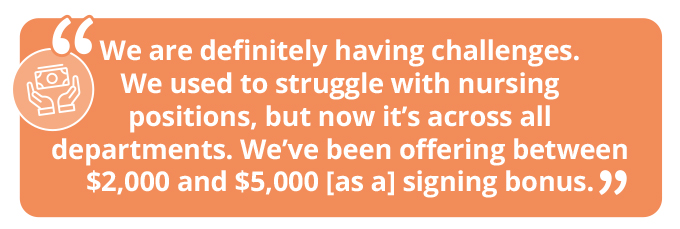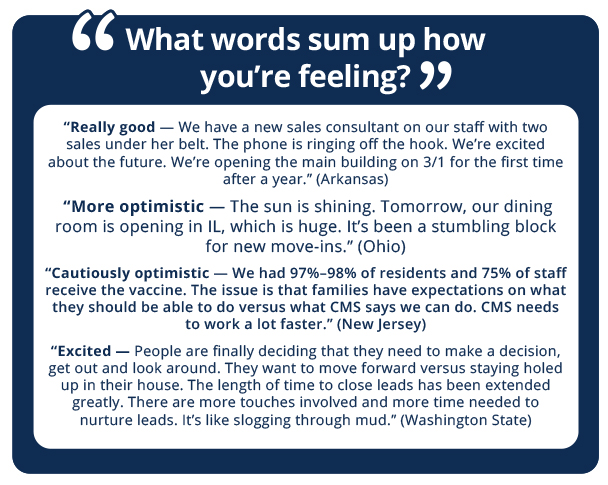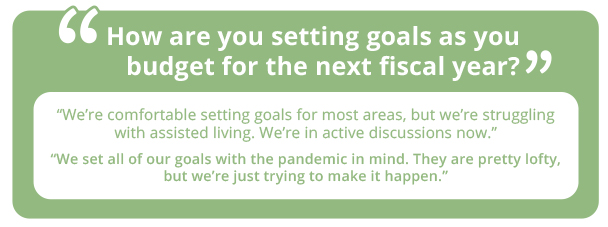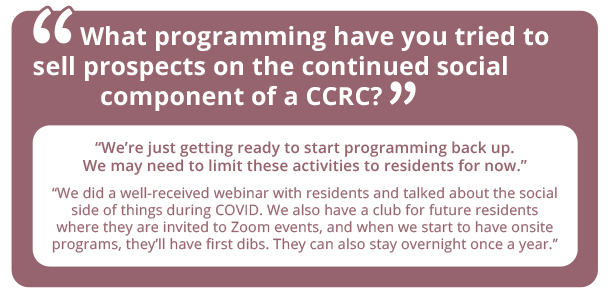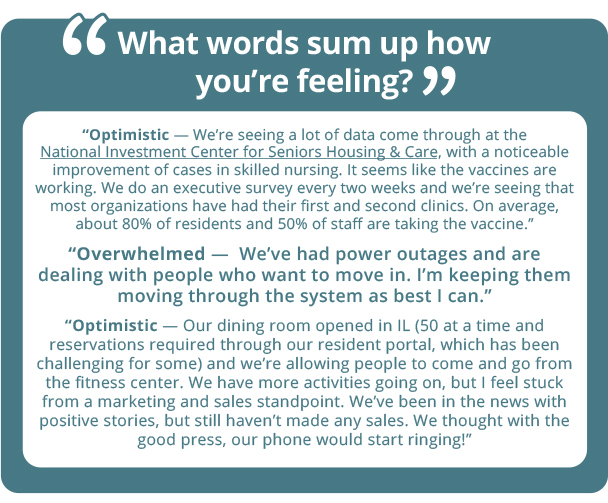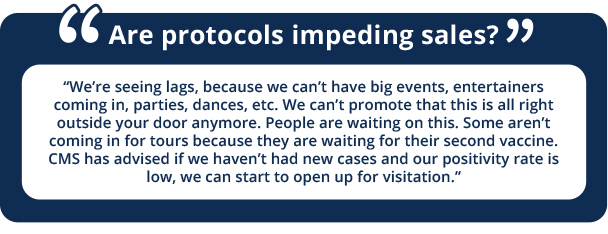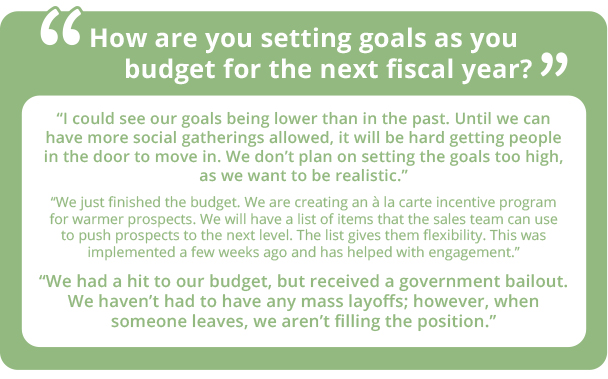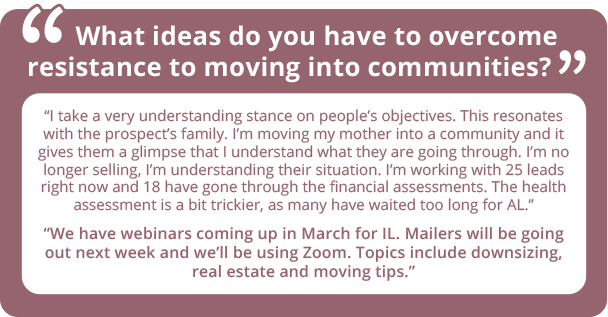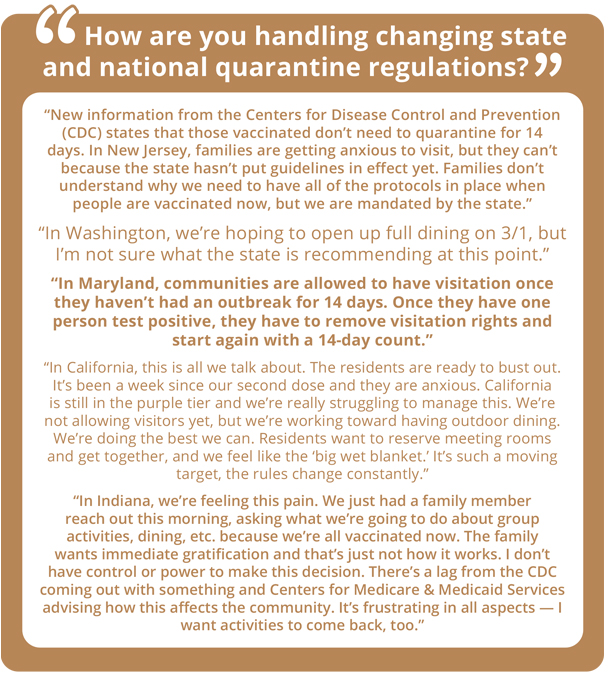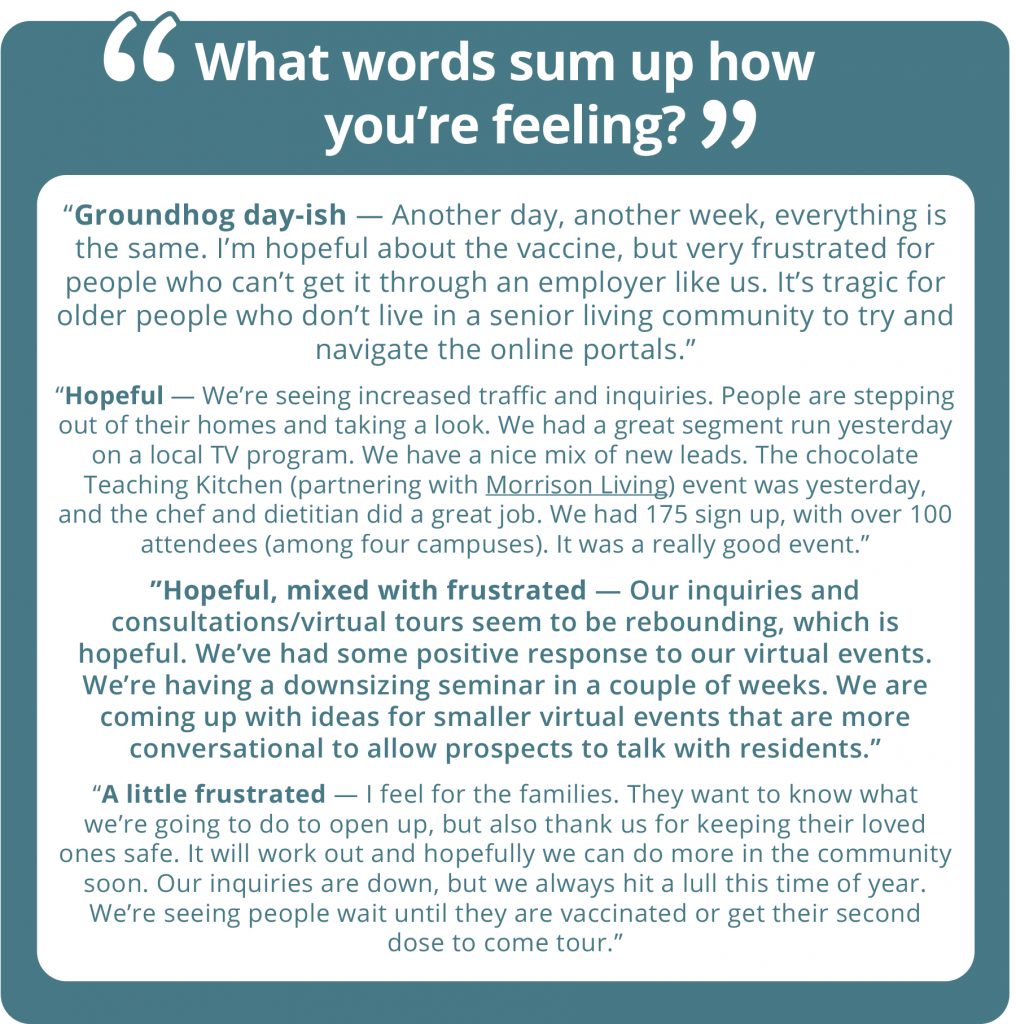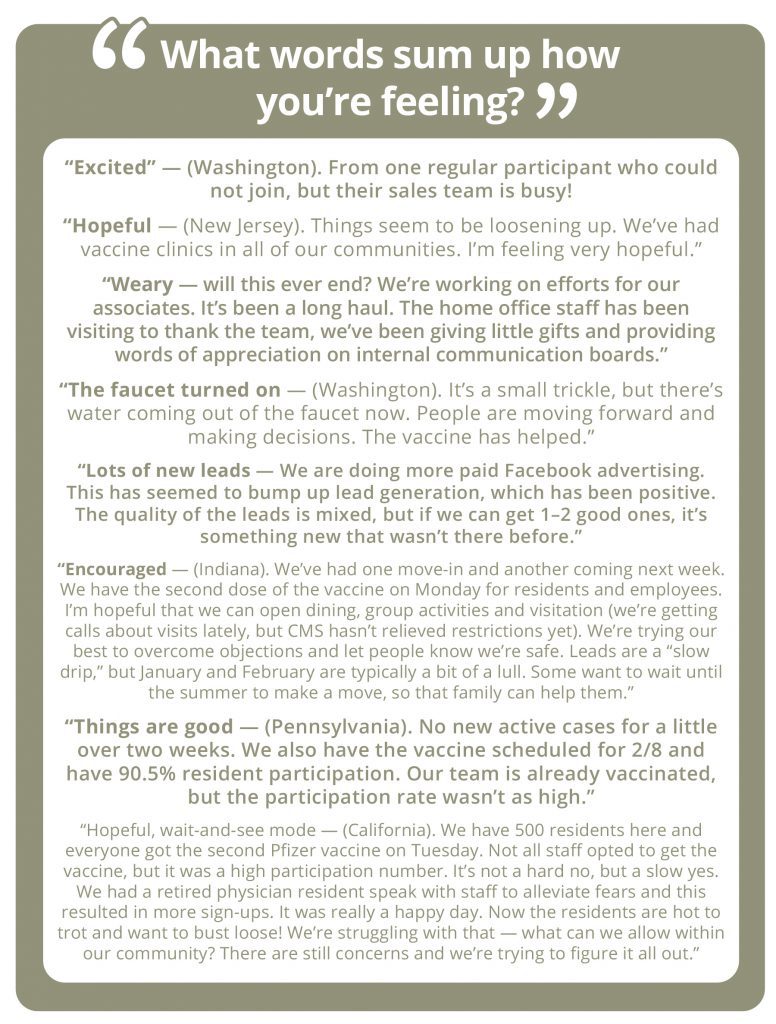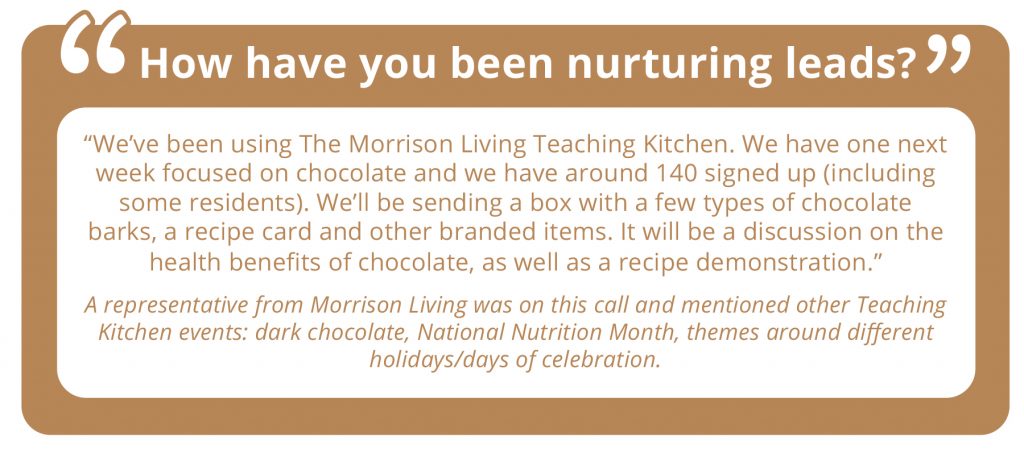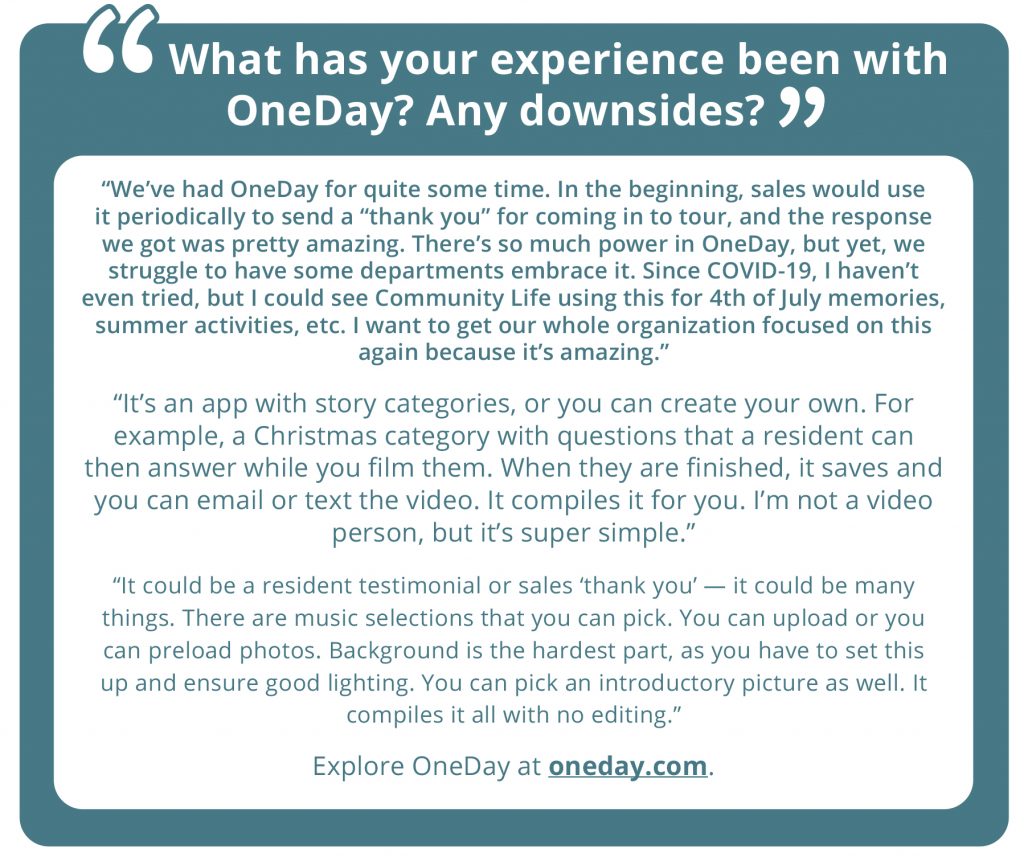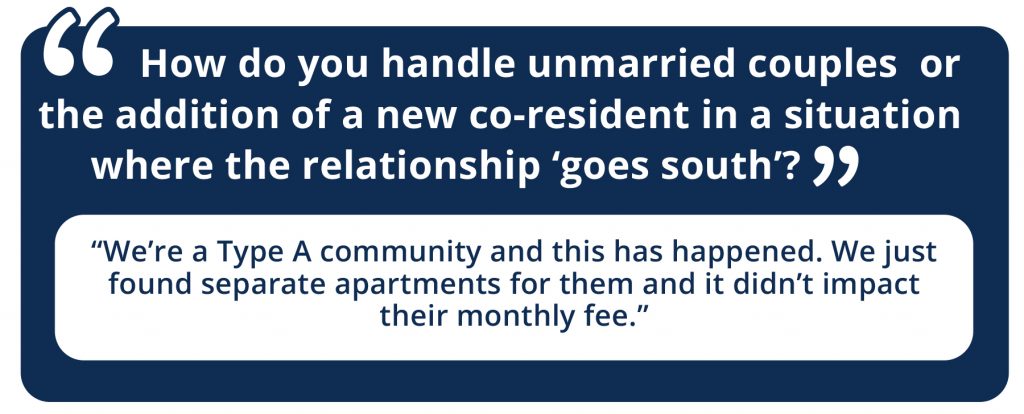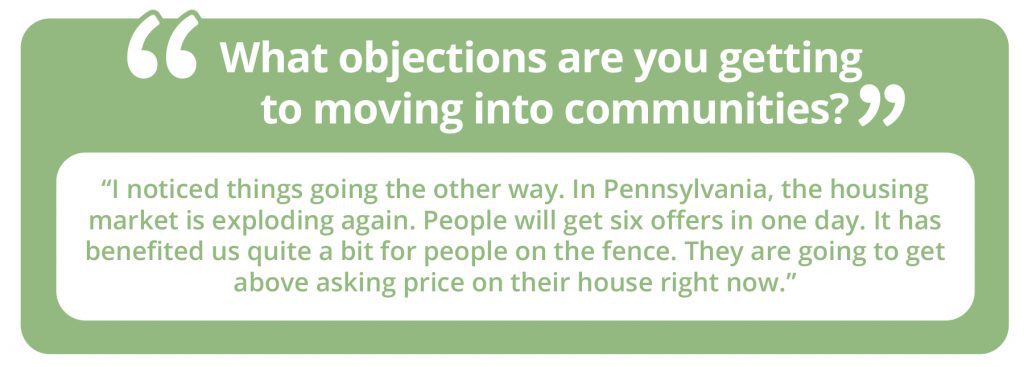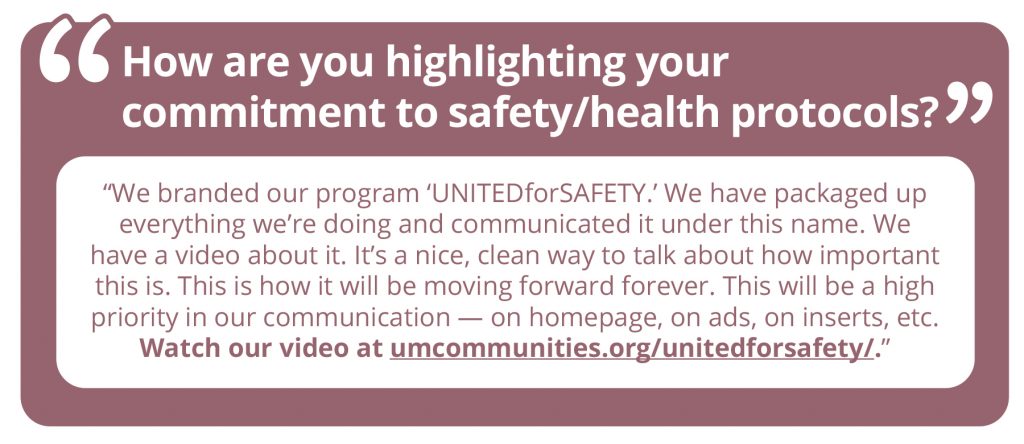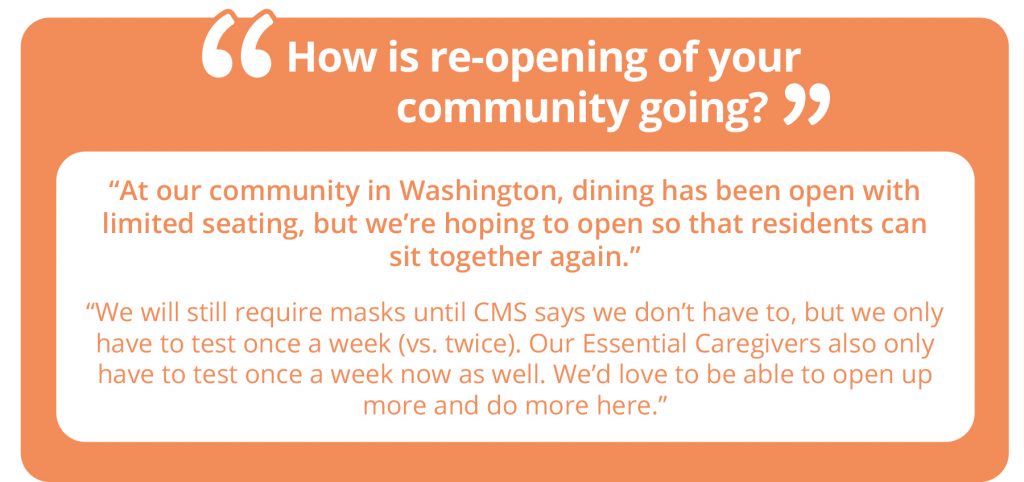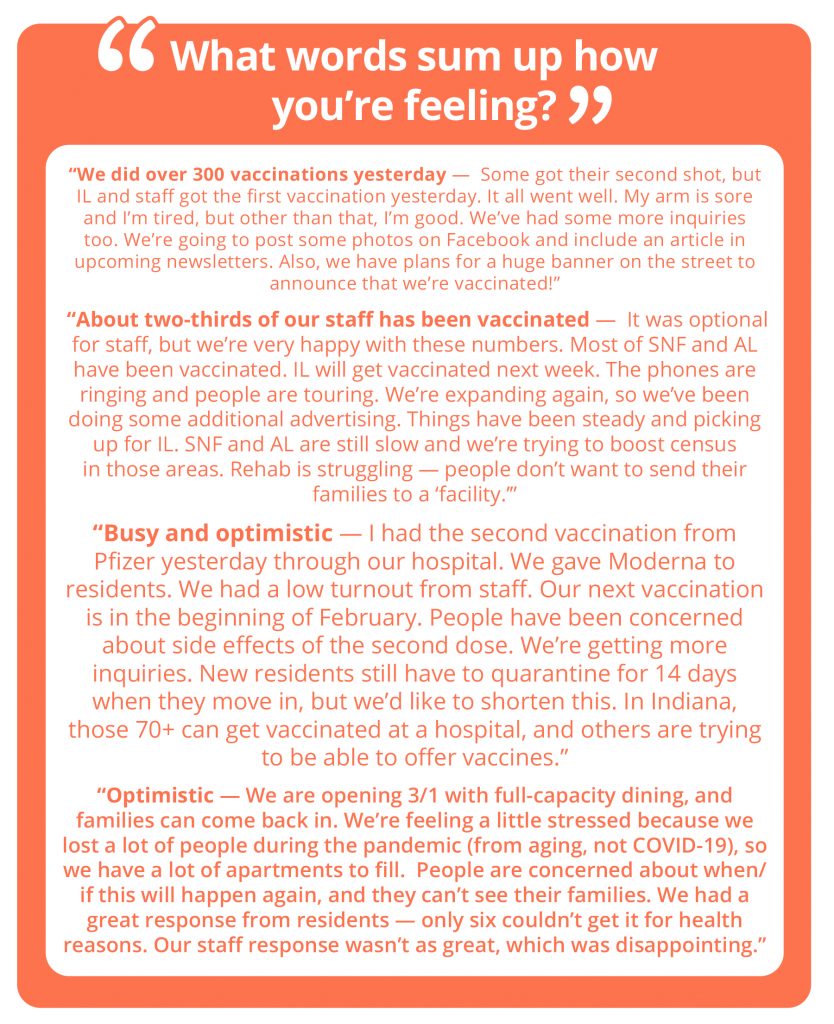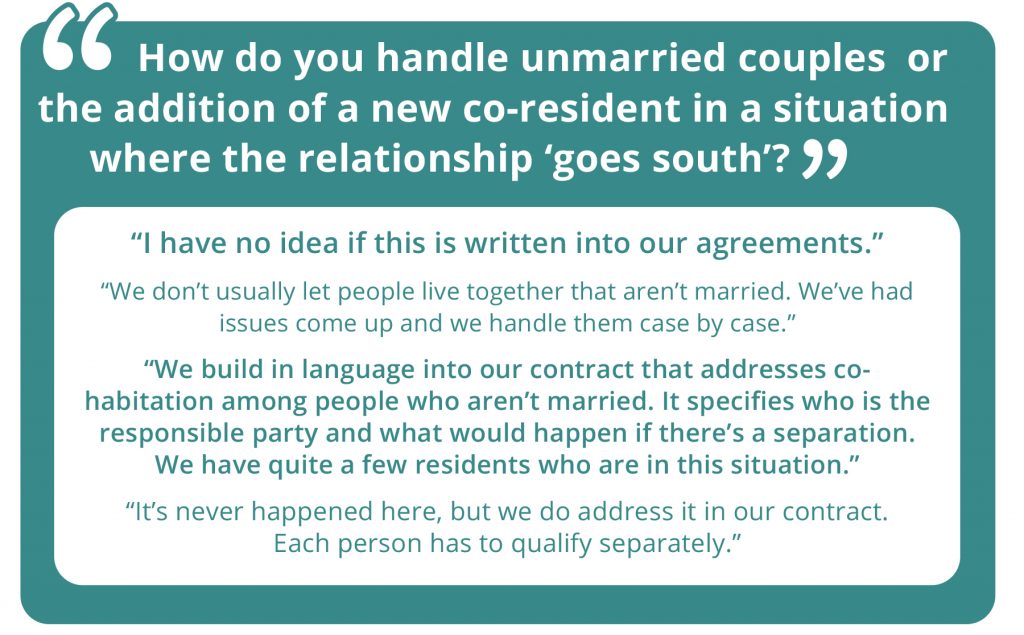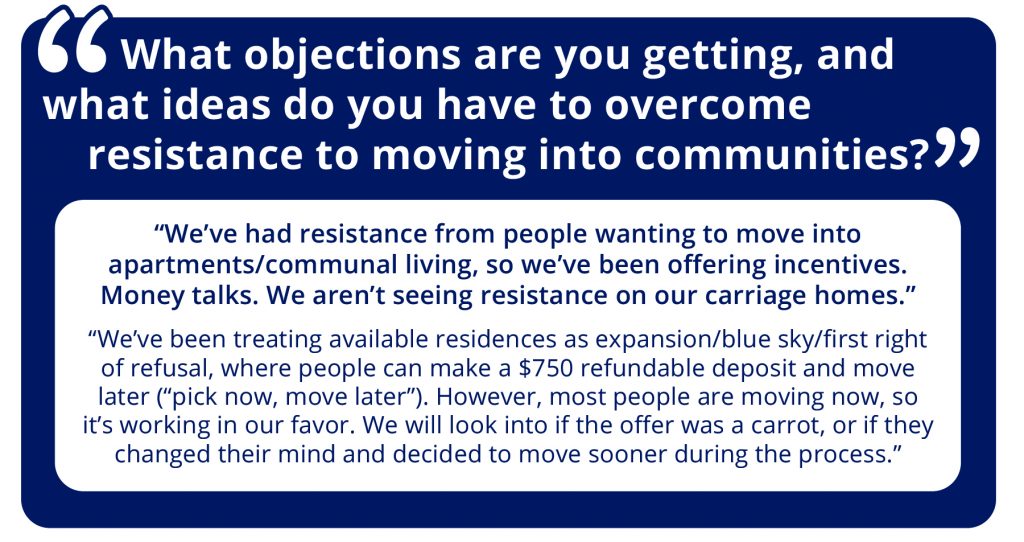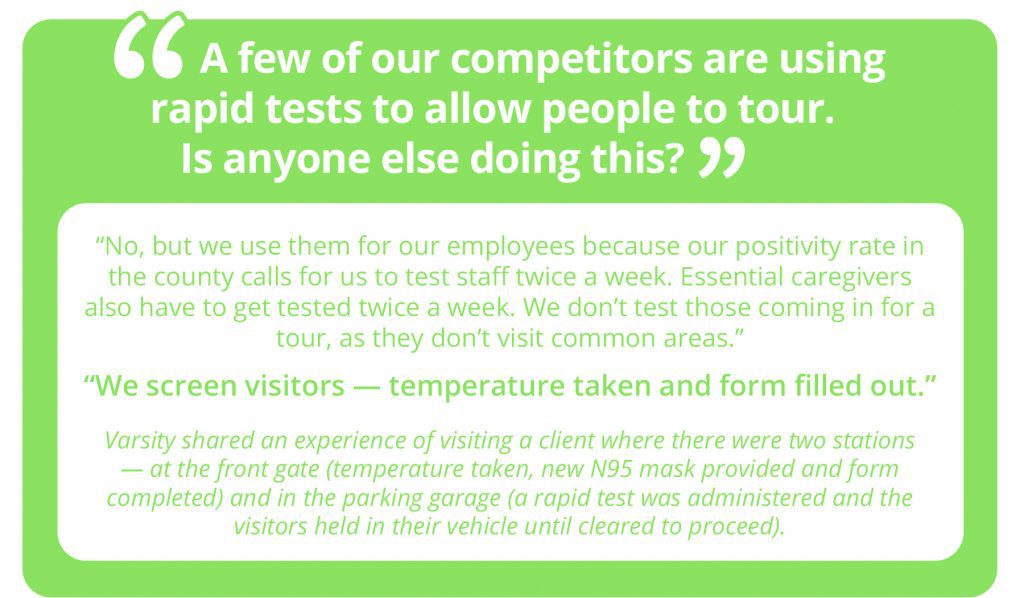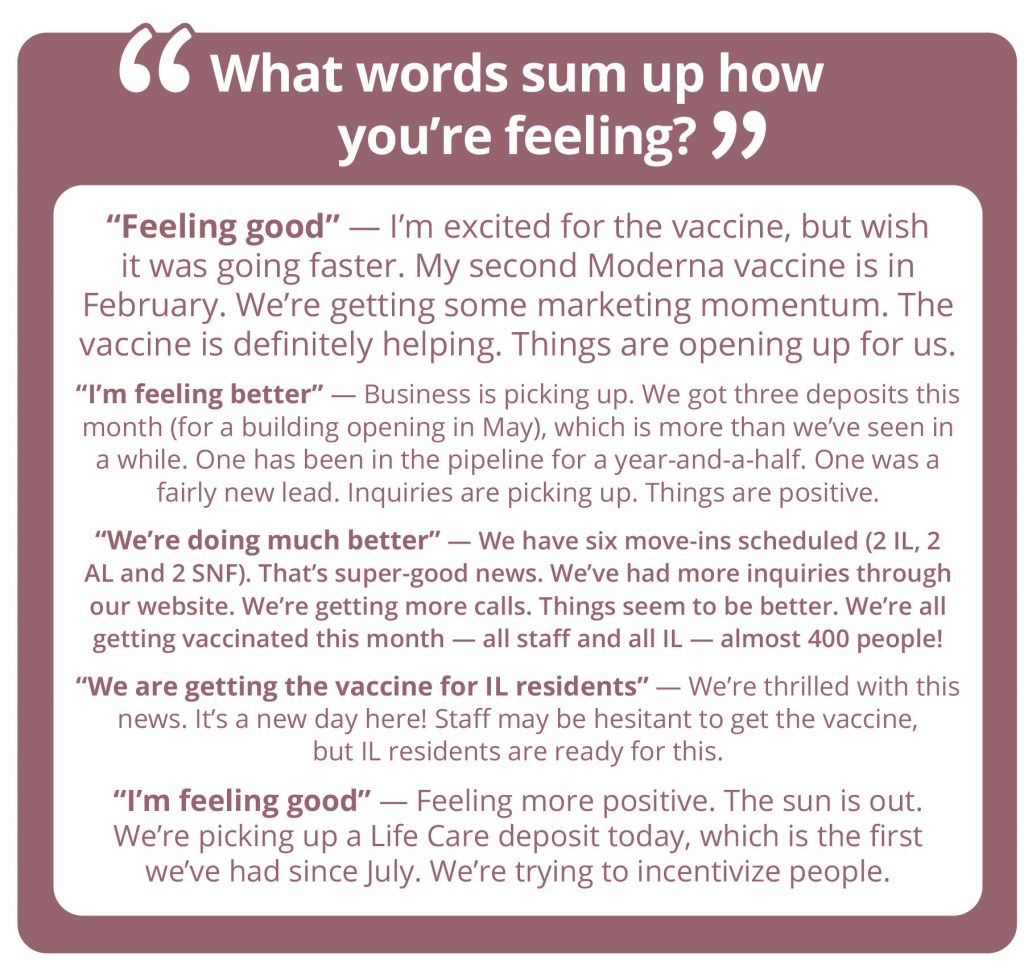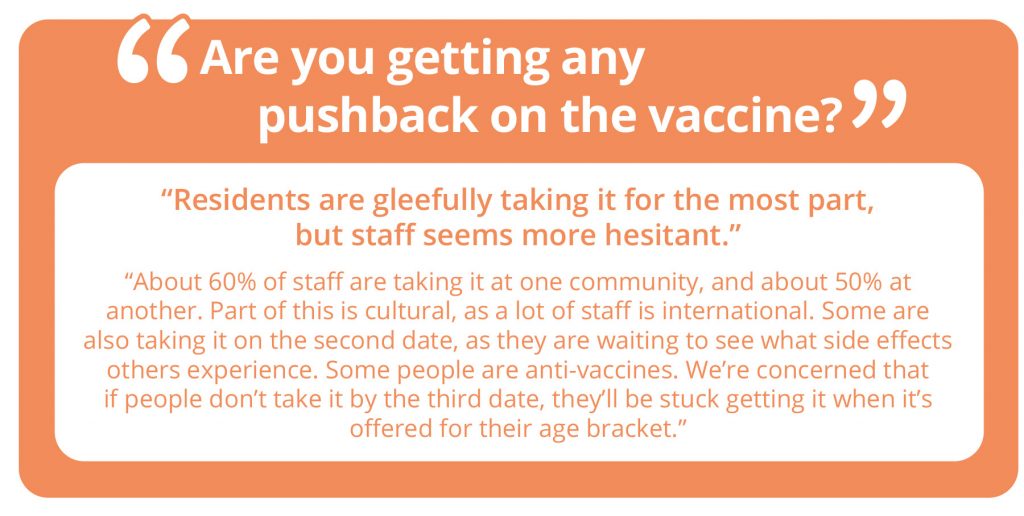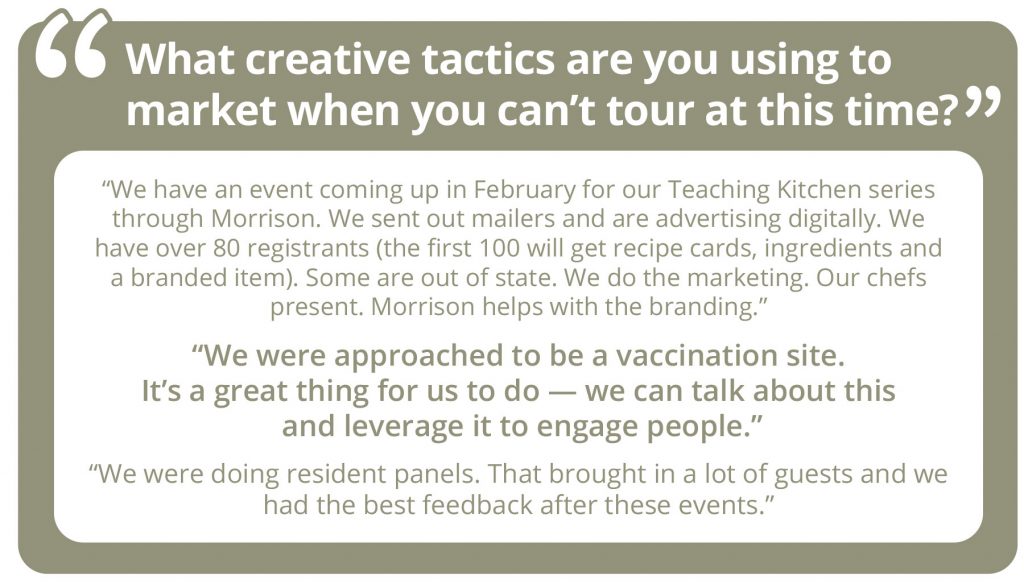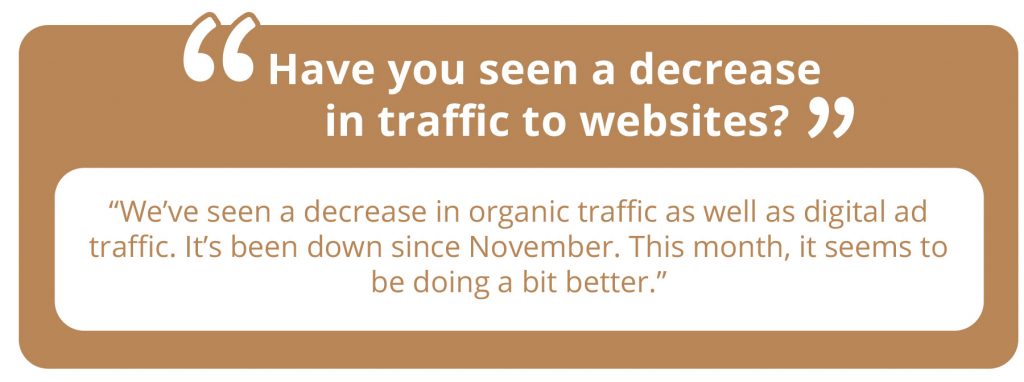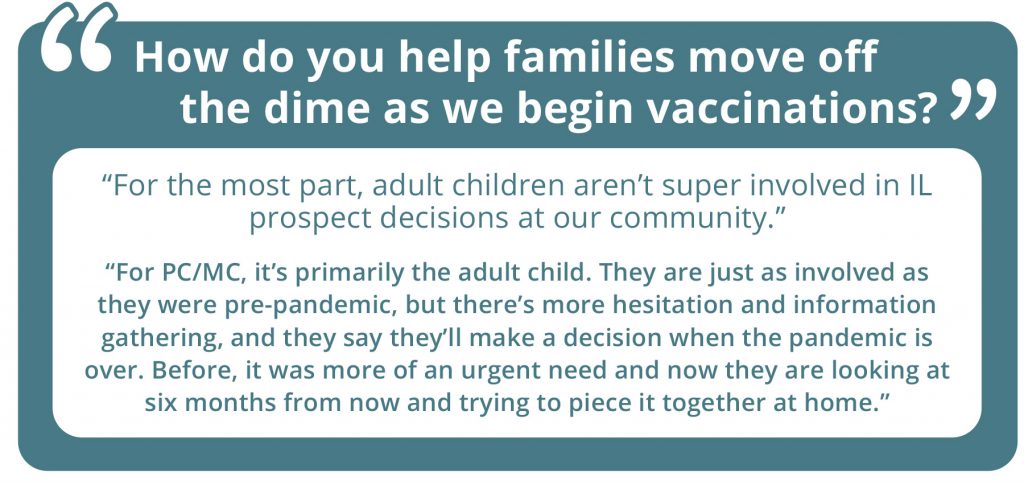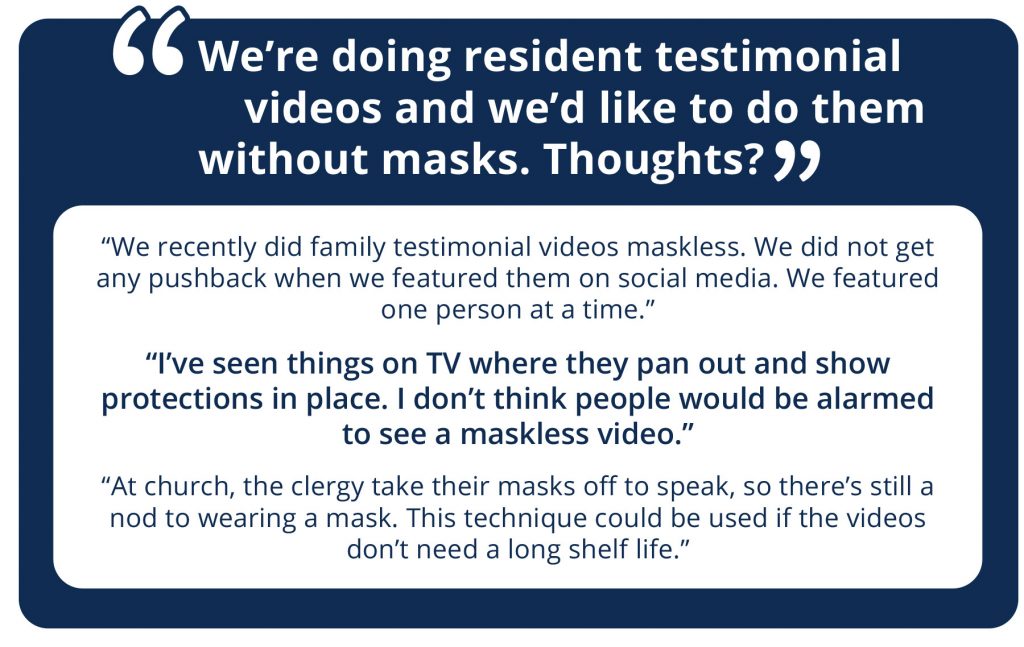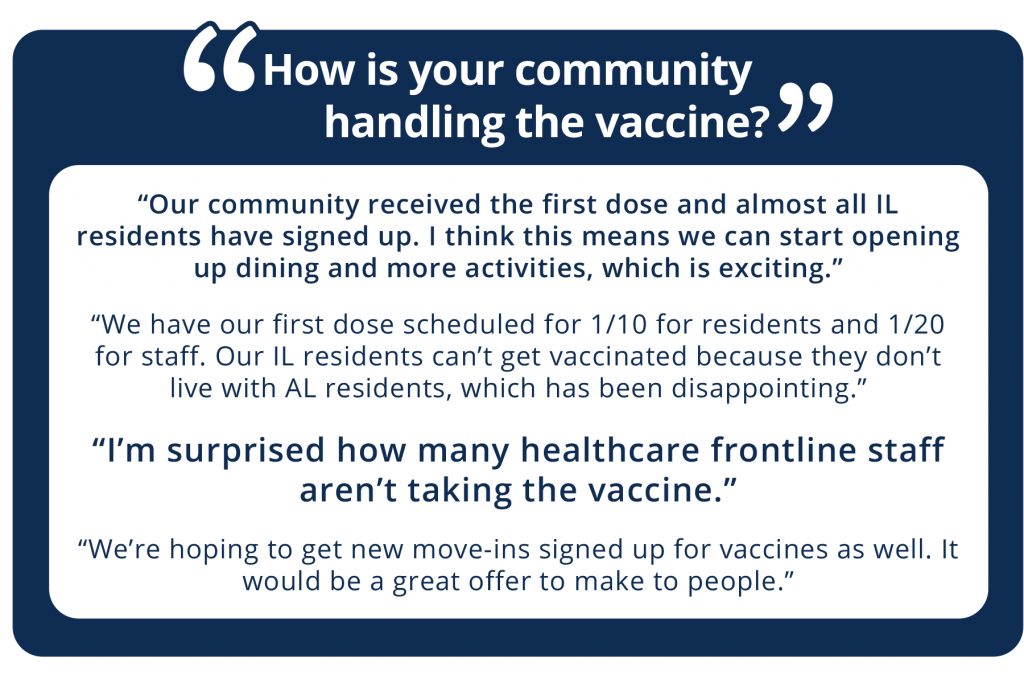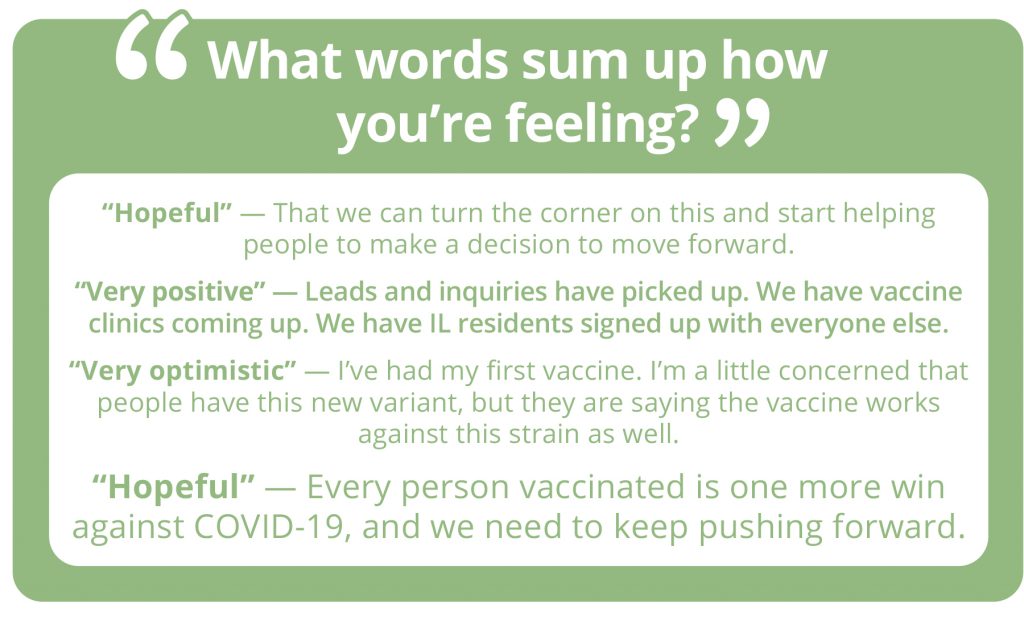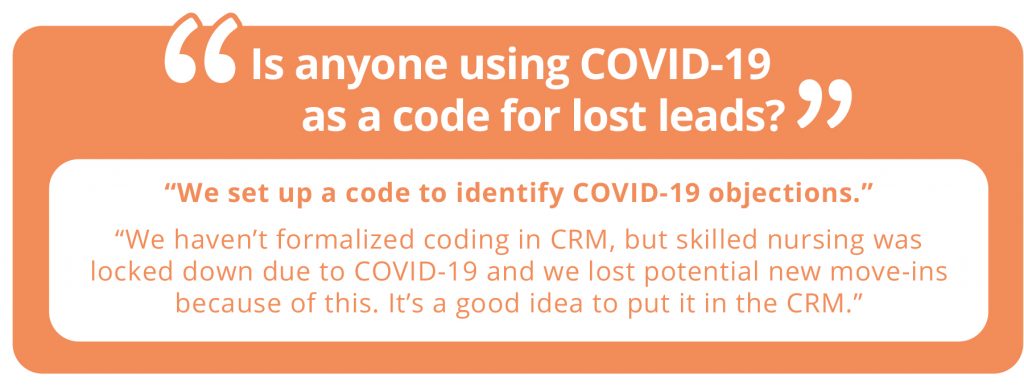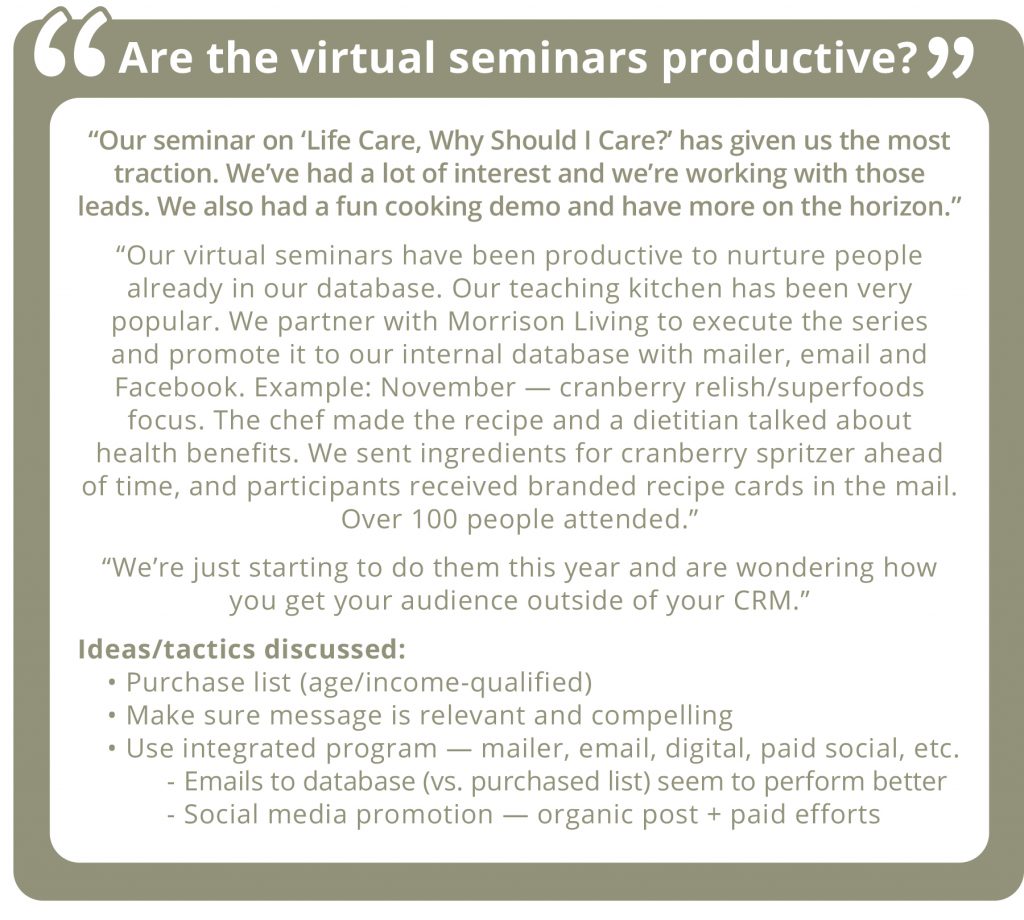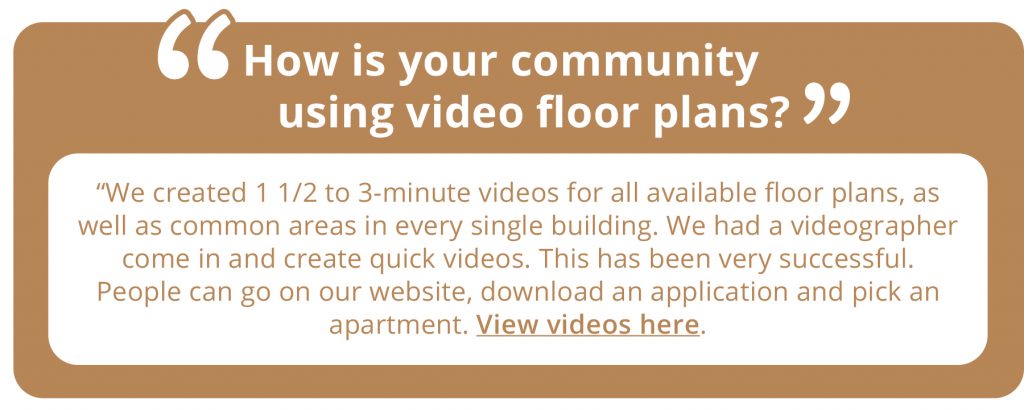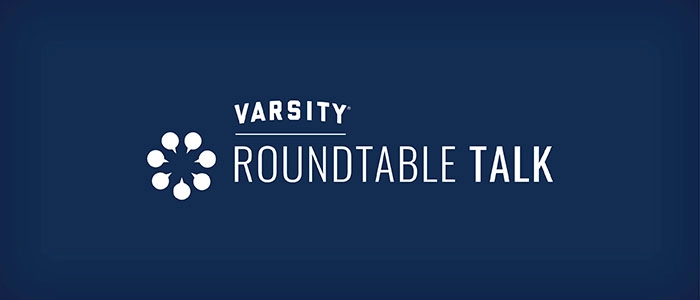The senior living industry is regaining speed after COVID-19, with some good surprises — and some challenges. One participant had a conversation recently in which she compared the current industry environment to a train, saying, “It takes a little time to get it going, but we continue to chug along, and we’re getting there.”
Read on for 7 takeaways from a month of conversations with communities across the country.
1. Leads are flooding in, especially in independent living.
Communities are seeing a lot of activity — even if they’re not holding events yet.

2. The American Rescue Plan gives communities the opportunity to get funds from local government.
A lot of dialogue this month centered around the American Rescue Plan and how senior living communities can get a stake of those funds. The money can go to any community, but nonprofit organizations have a strong story to tell. So if you fall into this category and serve seniors, you are positioned well to receive funding, as long as you know who to ask, according to Seth Anthony, a roundtable participant and Marketing & Business Development Manager at LW Consulting.
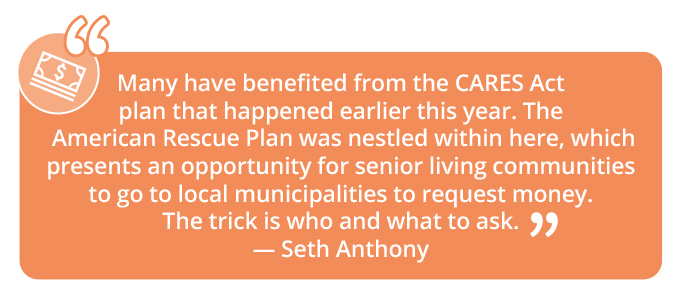
If you’re interested in learning more about how to receive these funds, contact Seth directly.
3. Marketing higher levels of care is a challenge.
Leads and sales for care higher up the continuum are improving, but lagging behind independent living. One reason for that is competition with communities that have lifted restrictions.

Another roadblock is staffing issues. One participant shared about having trouble hiring enough employees to meet staffing requirements for a higher level of care.
4. COVID-19 safety concerns are down.
Prospects’ concerns about safety and precautions related to COVID have lessened considerably.

5. Questions about the post-COVID experience are up.
Many prospects are now concerned about whether restrictions on dining, programming and visiting have been removed. They are ready to get back to normal. One roundtable participant said, “COVID-19 seems to be out of the picture, but our team is getting questions such as, ‘Can I visit as a prospect?,’ ‘Can family visit me if I move in?’ and ‘Are your dining rooms open?’”
6. Communities are offering incentives for staff vaccinations.
More team members have gotten the vaccine, but the percentages are still lower than for residents. Communities are using tools such as education, one-on-one meetings and incentives to boost participation rates.

7. Some communities have seen leads and move-ins skew younger.
Some participants are noticing that the average age of leads and move-ins is lower than it’s been in the past few years. One marketer said, “We’ve had several (new residents) in their 60s and early 70s. We’re definitely seeing a trend here. There is some feeling that after being cooped up during COVID-19, people are drawn to this environment.”
All in all, it’s been a great month! Sales counselors are busy, phones are ringing, events are well-attended and communities are filling apartments that have been empty for a long time. One participant even said, “I’ve been here 17 years and I can’t remember a time where we’ve seen the interest we have recently.”
Look for our next monthly roundtable recap in your inbox. Until then, please be sure to join our weekly Sales & Marketing Roundtable on Thursdays at noon ET and 11 a.m. CT.
For login information, email DDunham@varsitybranding.com.

